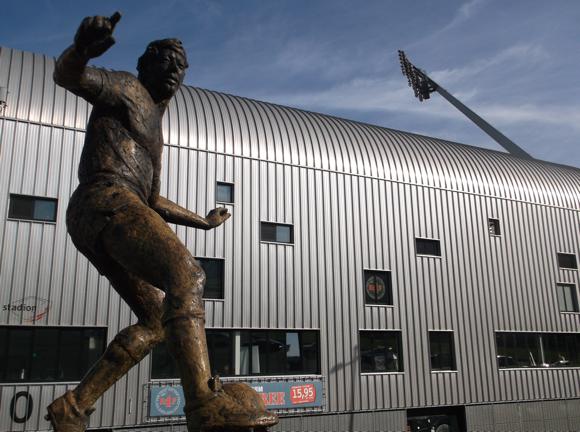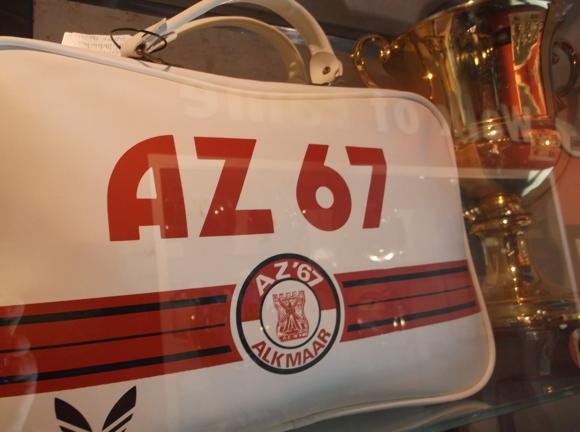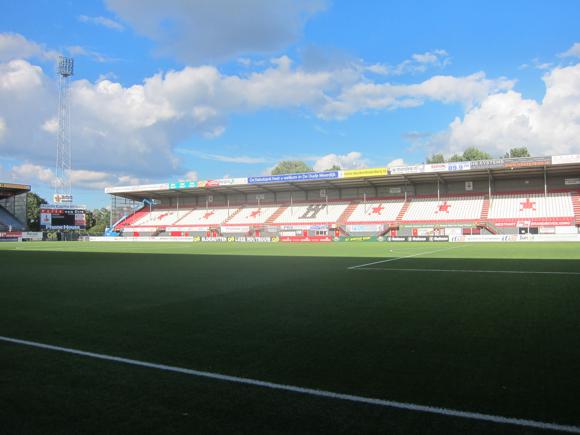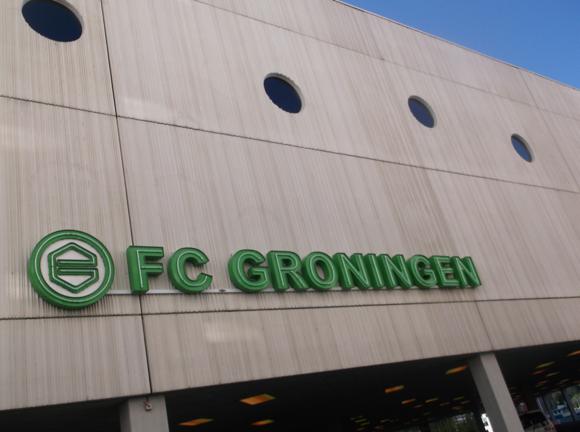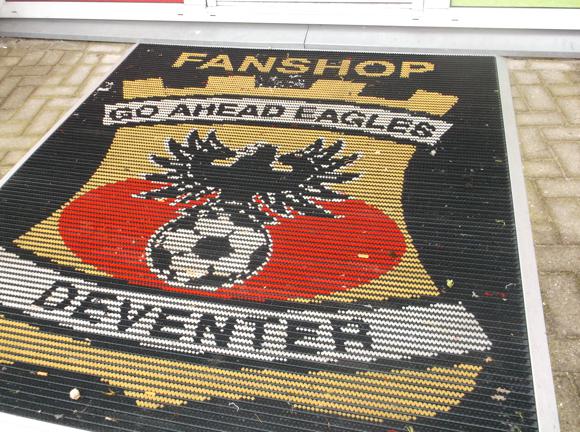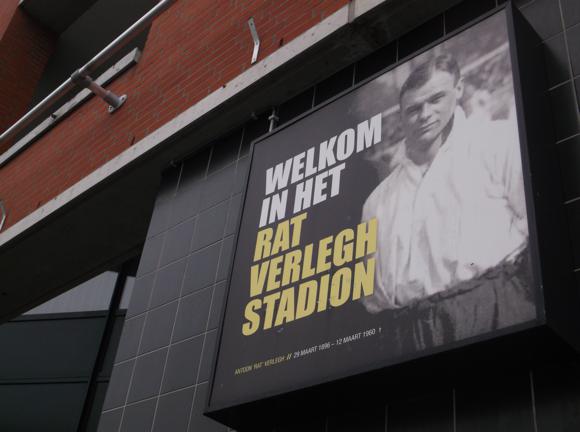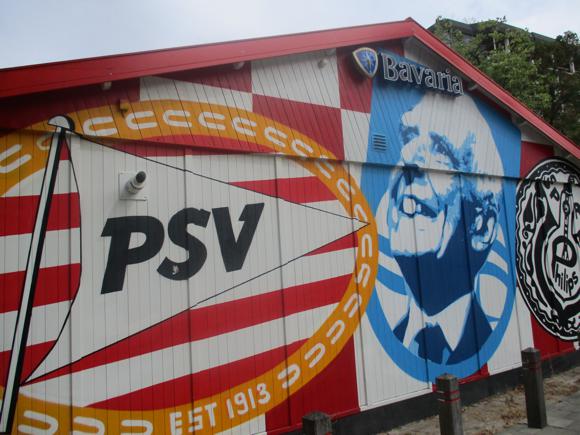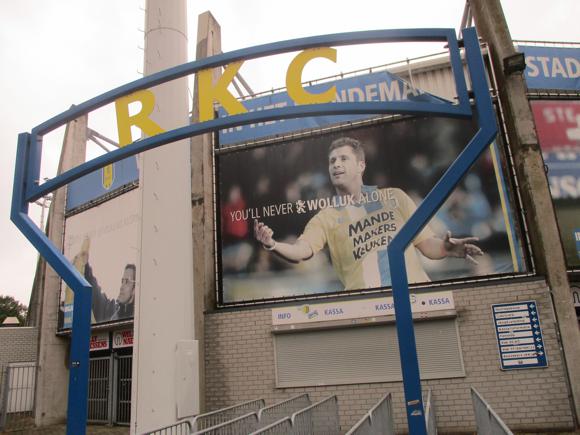A fan’s guide – the club from early doors to today
Named after the Dutch leader at Waterloo later headquartered here, Willem II have rarely performed royal heroics on the football field. Three times champions of Holland, once during World War I, twice under Czech master coach František Fadrhonc in the 1950s, the flagship club of Tilburg in North Brabant has been bouncing between top and second tier for most of the modern era.
Formed as Tilburgia in 1896, the club soon became Willem II and joined the Dutch FA in 1904. Ten years later, they made the three-team play-off for the national title – in 1916, they won it, pipping local rivals NAC Breda in the Eerste Klaase South, scoring 65 goals in 14 games and shading the title over Go Ahead Eagles. The van Son brothers, Toon and Jos, and Tinus van Beurden, all later Dutch internationals, were among the goalscorers.
It was the first time that the title had left the Randstad, the country’s central urban hub – but Tilburg would have to wait nearly half a century to welcome another.

In between Willem II had moved grounds, from Koningshoeven south-east of town to the municipal sport park on Goirleseweg, where lesser local clubs RKTVV and NOAD had been based. Before it was stripped for firewood, the stadium saw Willem II win through and claim more war-time silverware, the Dutch Cup of 1944. The club continued to play in its patriotic colours of red, white and blue, The Tricolores bringing a modicum of cheer as it fulfilled away fixtures in the Nazi-occupied Netherlands.
With materials scarce, the post-war authorities still managed to create a new sports complex around the original football ground. On the pitch, Czech emigré František Fadrhonc worked his own miracles. Having escaped the Communist takeover of 1948, this sports instructor and coach happened to settle in Brabant. In 1949, he started his own Tilburg revolution, taking charge of Willem II and bringing a level of physical fitness otherwise not seen in the then Dutch amateur game.

Play-off finalists in 1951, The Tricolores won all six games at the same stage the following year to become Dutch champions, taking the title with a 2-1 win at Ajax. Still only 22, under Fadrhonc, title-winning winger Piet de Jong would blossom into the all-time top scorer for Willem II. Alongside him, Jan van Roessel and Sjel de Bruyckere both earned several caps in a Dutch shirt.
Narrowly losing out on a play-off spot for the next two seasons, Willem II embraced the new professional era by winning the title again in 1955, with the same star forward line.
In 1956, Fadrhonc left to work more magic at Enschede and Deventer and steered the famous Dutch national side to the World Cup in 1974, where he was second-in-command under Rinus Michels.
Unable to enter the invitation-only inaugural European Cup of 1955-56, Willem II spent the next decade between the Ere- and Eerstedivisie, the surprise 3-0 win over Den Haag to win the Dutch Cup in 1963 coinciding with another relegation. Given a plum draw against Manchester United in the Cup Winners’ Cup, Willem II held Law, Charlton and Crerand to a 1-1 draw in Rotterdam before a 6-1 drubbing at Old Trafford.

The next time Willem II competed at major European level, it was under Co Adriaanse, in 1998. In financial difficulties in the 1970s and 1980s, the club had opted for a policy of showcasing promising talent then selling on to bigger clubs. Later Arsenal star Marc Overmars had played a season in Tilburg before joining Ajax, where Adriaanse then worked as youth-team coach. The revenue also helped towards the modernisation of the stadium, up to international standard – Holland played here twice in the mid-1990s.
Adriaanse came in shortly after another later Premier League figure, Jaap Stam, had left for PSV Eindhoven. Nonetheless, he was able to take Willem II back up the league, finishing runners-up to Feyenoord in 1999, the club’s best performance in modern times. Out of their depth in the subsequent Champions League, managing two draws in six group games, Willem II soon saw Adriaanse returning to Ajax.
His farewell had been announced the previous January – and it came a week earlier than planned, after a humiliating 4-1 end-of-season defeat at home to Cambuur.

Willem II maintained a top-tier presence, losing the 2005 Dutch Cup final to Feyenoord after a memorable semi-final win over Ajax at a packed home stadium, but slipped out of the Eredivisie in 2011. The selling-on policy – Danny Landzaat, Mounir El Hamdaoui – had eventually backfired and the end, a derby defeat to NAC Breda, of all people, was ignominious.
For five years, Jurgen Streppel worked within a limited budget to bring two promotions, despite a match-fixing scandal breaking in 2015. With Jordens Peters as the mainstay centre-back club captain, Willem II stayed up in 2016 thanks to the narrowest of play-off wins over local rivals NAC Breda.
Former NAC centre-back Erwin van de Looi had a fight on his hands to keep The Tricolores still flying in the Eredivisie in 2017-18. Now it’s down to former Ajax and Bruges boss Adrie Koster.






Stadium Guide
The field of dreams – and the stands around it



The site of the Koning Willem II Stadion, way south of Tilburg towards the Belgian border, has seen football action for almost a century. First a municipal sports park, it welcomed Willem II in 1923 – the club had previously been playing at further east Koningshoeven.
Overhauled in the immediate aftermath of World War II, the stadium attracted five-figure crowds during the club’s glory years of the early 1950s. Floodlights were only installed in 1982 after a shirt-sponsorship deal – rare European ties had to be switched to Rotterdam.

A long-mooted rebuild – that almost culminated in a move to Moerenburg, beside Koningshoeven – began with the demolition of the old sports park in 1992 and the construction of the Willem II Stadion, later named Koning Willem II Stadion, in 1995.
Capacity is an all-seated 14,500. Home fans occupy sectors A-C behind the Kingside goal, filled with season-ticket holders.
Away fans are allocated sector (Vak) D, segregated but right next to the home end. For certain high-risk derby games, against NAC Breda in particular, there is an agreement not to allow away fans in.
getting there
Going to the stadium – tips and timings

From perron 8 at Tilburg station, Arriva bus 8 (destination Het Laar/Laarstraat; Mon-Sat every 20mins, Sat eve/Sun every 30mins) takes 10mins/8 stops to reach Laarstraat. From the bus stop, keep walking in the same direction for 200 yards along the main road of Oude Goirlese Weg – you’ll see the stadium diagonally opposite at the main junction with Ringbaan Zuid.
Regional De Lijn bus 450 (direction Turnhout in Belgium) runs hourly from Tilburg station (perron B), arriving right by the ground at the Stadion stop itself.
getting in
Buying tickets – when, where, how and how much
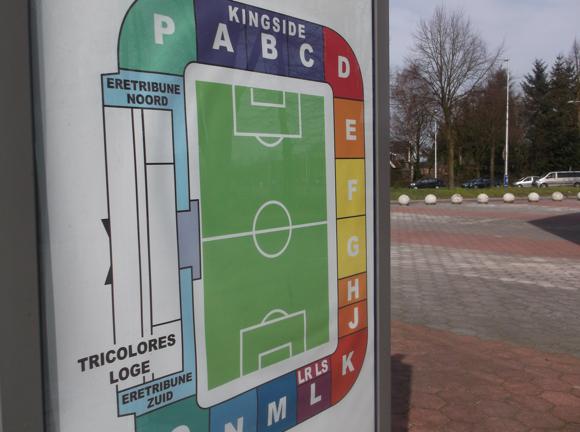
A club card generally isn’t required for ticket purchase at Willem II. For high-risk fixtures, though, such as the derby with NAC Breda, sales are limited to registered supporters at two per person.
Tickets are otherwise distributed at the stadium reception office (Mon-Fri 9am-5pm), transactions in cash or by debit card only. There are also print-at-home e-ticket sales through PayPal.
For low-risk games, there are also sales on the day from 90min before kick-off, by cash or debit card.
For all enquiries, contact +31 13 549 0590 (Mon-Fri 8.30am-5pm) or email ticketing@willem-ii.nl.
The cheapest seats are behind the south goal, sectors L and N, €22, M being €25. The home north end opposite is season-ticket holders only. Opposite the main stand, the Lange zijde, prices are €27.50 and it’s €35 in the main Eretribune.
Children under 12 are charged €8.50-€13.50, under-16s in family-friendly sector J, €13.50. Youths aged 13-16 pay the adult rate everywhere else.
Games with Ajax, Feyenoord, PSV and NAC Breda are all €5 extra (under-12s €2.50) and require registration.
what to buy
Shirts, kits, merchandise and gifts



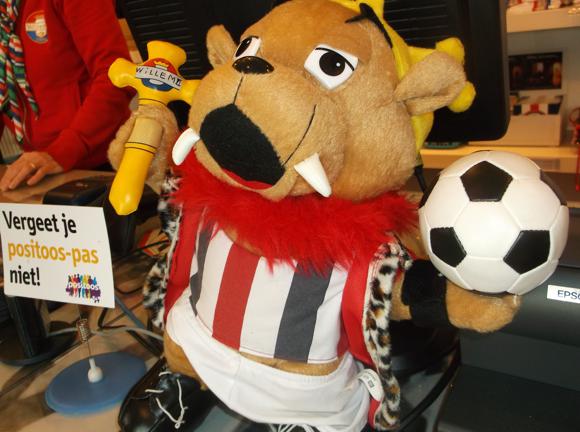
To the left of the main entrance, the Willem II Fanshop (Wed-Fri 1pm-5pm, match days 3hrs before kick-off, at half-time & for 1hr after final whistle) is a large, well stocked store with a black-and-white mural of the club’s title-winning team of the 1950s and club mascot Kingo in various forms.
Presumably modelled on the 19th-century Dutch king who died in Tilburg in 1849, Kingo does him few favours, bearing vampire-like fangs and a dopey, droopy-eyelidded expression.
Where to Drink
Pre-match beers for fans and casual visitors
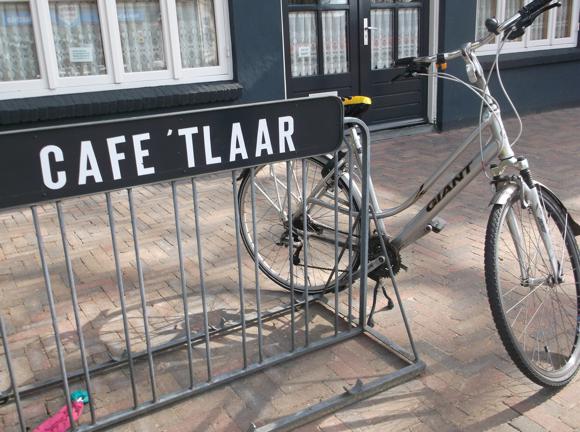



The only bar anywhere near the stadium is ’t Laar on Laarstraat by the junction with Afrikaanderstraat and the No.8 bus stop – but it has been under threat of closure for years.
In the main building, the large match-day supporters’ bar, the Jupilercafé D’n Beitel, opens from 2hrs before kick-off and also to screen Willem II away games. Low-alcohol Jupiler lager is sold at kiosks around the ground.
If it’s a weekday evening game, the TCT tennis club bar alongside may be open – it closes at weekends.


